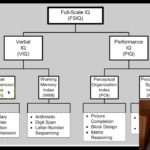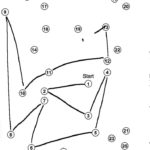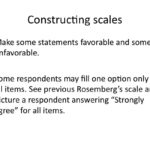Category: Tests/classifications/scales
Bellevue-Wechsler Scales or Wechsler Scales
The Bellevue-Wechsler scales are a set of intelligence tests first developed by the Romanian-american psychologist David Wechsler, who worked as a psychologist at Bellevue Hospital Center in New York for several decades. The scales were in part created as an alternative to the original … Continue reading →
General Practitioner Assessment Of Cognition (GPCOG)
The general practitioner assessment of cognition is a survey used to assess cognitive impairment, and is designed to be used by general practitioners. The test is short, and can be completed within a few minutes. Link to sheet of the … Continue reading →
Intelligence Testing
Intelligence testing refers to the use of standardized tests as tools for measuring and assessing intelligence. Mental testing was first used in China in 605 AD as part of the imperial examination system. Intelligence testing was utilized in France in … Continue reading →
Big Five Personality Factor Model
The big five personality factor model is a relatively robust general model for assessing differences in individual personality, based on factorial analysis of personality tests. The model divides personality traits into five broad dimensions, which are conscientiousness, emotional stability, agreeableness, extraversion and … Continue reading →
Clock Drawing Test
The clock drawing test is a simple test designed to test several aspects of cognitive functioning, and is often used when assessing patients for neurological disorders and dementia. See list of more psychological test procedures.
Trail Making Test
The trail making test (TMT) was developed in 1944 as a component of the Army Individual Test Battery, and is commonly used today to test for cognitive impairment. The test involves participants being asked to draw lines on a page, … Continue reading →
Glasgow Coma Scale
The Glasgow coma scale is a test for assessing the level of conscious awareness in a patient. The test was proposed in 1974 by Graham Teasdale and Bryan Jennett, and is the most widely used consciousness level scale. The scale uses specific indicators … Continue reading →
Likert Scale
The Likert scale is a widely used type of scale designed to measure people’s attitudes, as given on a scale of 5 specific levels of agreement or disagreement. This type of scale was introduced by American psychologist Rensis Likert in 1932. Source: Likert, … Continue reading →
Revised Children’s Manifest Anxiety Scale
The revised children’s manifest anxiety scale is a test designed to asses anxiety in children, and is suitable for use in clinical and educational settings. The test can indicate the presence of academic stress, test anxiety, peer and family conflicts, and drug … Continue reading →
Rod and Frame Test
The Rod and Frame Test was developed in the 1940s by Herman Witkin and Solomon Asch, and was designed to distinguish people according to the degree to which they depend on external cues in order to make visual judgements. Witkin … Continue reading →









